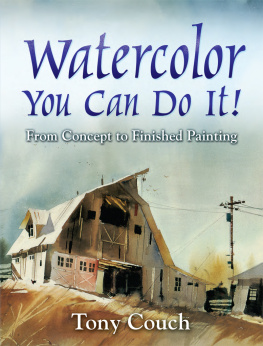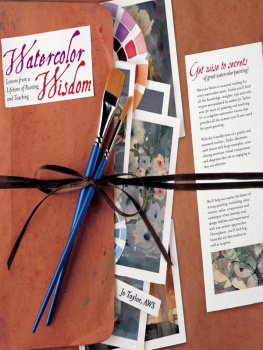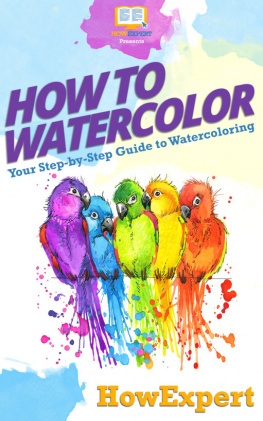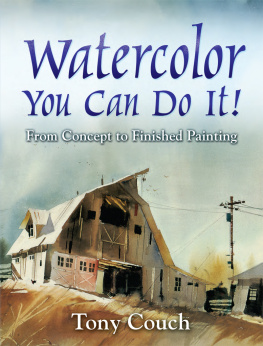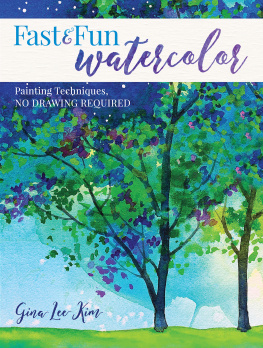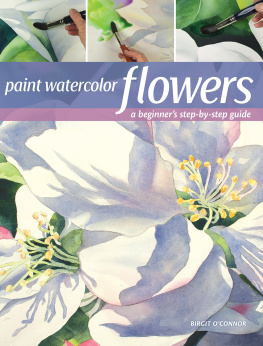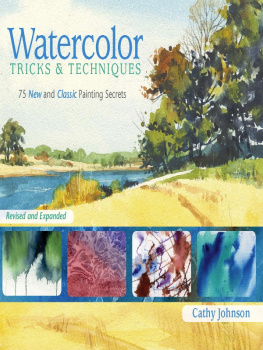

Copyright
Copyright 1987 by Tony Couch All rights reserved.
Bibliographical Note
This Dover edition, first published in 2019, is an unabridged republication of the work published by North Light Books, F&W Publications, Inc., Cincinnati, Ohio, in 1987.
International Standard Book Number
ISBN-13: 978-0-486-83431-3
ISBN-10: 0-486-83431-X
Manufactured in the United States by LSC Communications
83431X01 2019
www.doverpublications.com

Dedication
Dedicated to Ed Whitney who lit the fire
About the Author
For most people, one professional career at a time is plentybut not for Tony Couch. He pursues three successful careersas a pilot for Delta Airlines, a watercolor artist, and a watercolor teachereach with the same zest and enthusiasm evident in the pages of this book. Couch received his bachelor's degree in art from the University of Tampa and also studied with Edgar A. Whitney at the Pratt Institute in New York City. He has written articles on watercolor instruction for North Light, American Artist, and Palette Talk, and has produced a popular series of video tapes on watercolor painting. He teaches popular watercolor workshops throughout the United States and abroad and has won more than fifty art awards. Couch is an elected member of the Academic Artists Association, the Hudson Valley Art Association, Knickerbocker Artists, Salmagundi Club, the Society of Marine Painters, Watercolor West, and the Pittsburg, Georgia, Southern, and Midwest Watercolor Societies. He lives in Georgia.
Putting together a book takes a lot more time and effort than I had at first dreamed, and I am grateful for the considerable help and encouragement I received en route.
Particularly from the rest of the team: my wife, Bonnie, who watched the store and put out the fires while I wrote and painted, and Steve, Colleen, Anne, Belinda, and Tony Jr. who aided in various ways.
And Ril Donato of the Donato Photo Works for sterling darkroom production; the outstanding painters in and The Cleveland Museum of Art for giving permission to use their work; Gail Novak and the Belgian vice consul Paul Quaghebeur who posed for photos; North Light editor Fritz Henning who will wait four years for a book; editors David Lewis and Greg Albert for their enthusiasm and valuable help, and all those prodding students who asked, "When is your book coming out?"


Grain, 15" 22"
Contents
Introduction
I have some good news and some bad news for you. First, the bad news: if you expect to be a reasonably competent painter, you'll have to work at it consistently for a few years.
Aside from spreading paint on paper, there are two other skills you must acquire:
1. You must be able to draw, and
2. You must be able to design.
Now the good news: You can do it!
And I don't care how little "talent" you think you have or how much more talented others seem by comparison.
The word "talent" is a misnomer and has misled countless students away from painting. A better, more descriptive word is "interest."
The artist that improves is one who is interested in improving. He or she does the things, spends the time, and goes through whatever toil is required to learn, while the less interested artist skips over it. Hence, we always see more rapid advancement by the interested artist. Remember the formula:
W T = I
More work times more time spent working nets faster improvement. Conversely, less work times less time nets little improvement.
Perhaps the cause of this talent misconception lies in the fact that talent and aptitude are often confused. There is such a thing as aptitude; some have more aptitude than others for various skills, and painting may be among them. This only means the student with more painting aptitude will learn faster than the one with less or none at all.
It does not mean the one with greater aptitude will necessarily learn more!
It's even possible for one with less aptitude to arrive at the top before one with moreprovided greater time and effort has been spent.
In any case, once near the top, no one can tell or even cares which artist had greater aptitude during the learning process. Their skills will be comparable, while their paintings are unique.
I also suspect the talent gospel is spread by those of us looking for a simple "out." It's self-justifying to say, "He's a better artist than I am because he's so talented." (See, it's God's fault, not mine. Who can think less of me for lacking talent?) Many would rather not admit that the price in effort was too high, and that talent had nothing to do with it.
Reading books and attending workshops are great aids to learning; they're the most direct route to your goal. A long stretch of the route, however, is practiceand there are no shortcuts there. You must practice drawing, practice design, practice painting, practice creativity, practice, practice, practice!
While you practice, keep in mind that watercolor painters are divided into two groups: those who have been discouraged and those who are going to be discouraged. There's nothing wrong with discouragement; it's part of the game. The crime lies in quitting because of it. I did oncefor six yearsand I've been kicking myself since. If you have the desire, you'll be a competent painter. The only way you can fail is to quit!
The fact that you've read this far tells me you have some interest. Are you interested enough? I'm betting you are. So grab your brush and read onI'll show the way. I'm expecting great things of you.


Avalanche, 22" 30"

Drydock, 15" 22"
ONE
Equipment
What I Use and Why
I n general, watercolor artists use the same equipment and supplies, with differences dictated by personal taste.
Here's a list of what I useyou may want to add to or subtract from it. While good equipment is a help, there is no magic in tools; award-winning paintings have been painted with the most simple of them.
PALETTE
You can paint with only a plain white plate or a butcher tray for a palette. Put a puddle of each color near the edges, and use the middle for mixing. There's an economic advantage, however, in using a palette with a cover: it will keep the pigment moist and soft so you can paint another day without first scraping off and throwing away the old paint. It's impossible to get the dark, rich values and bright chroma you need when working with dried, hard pigment.

